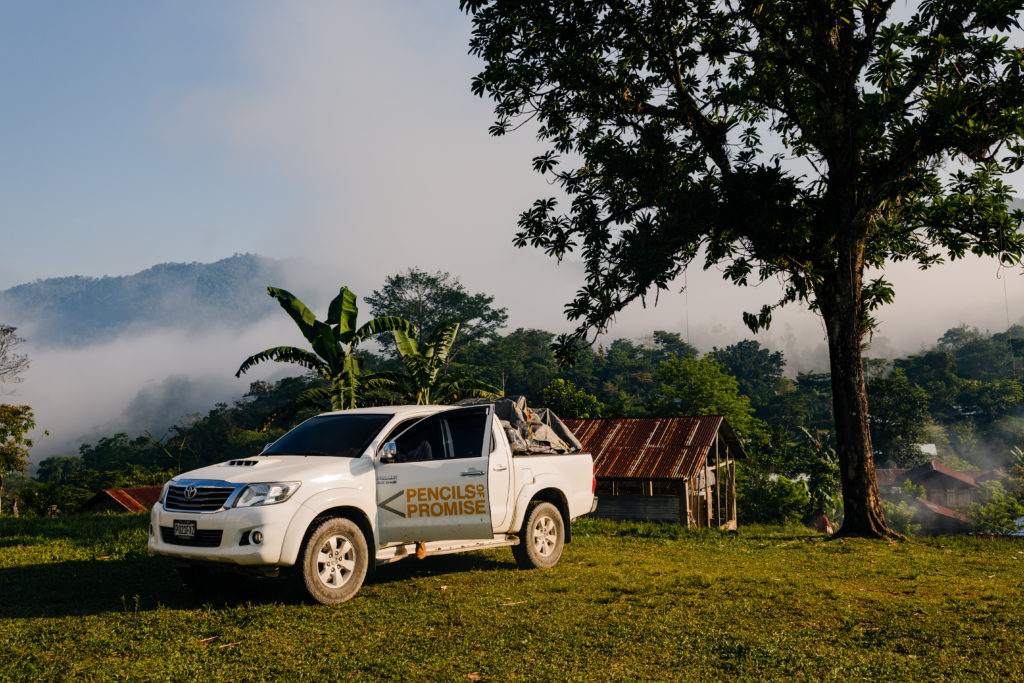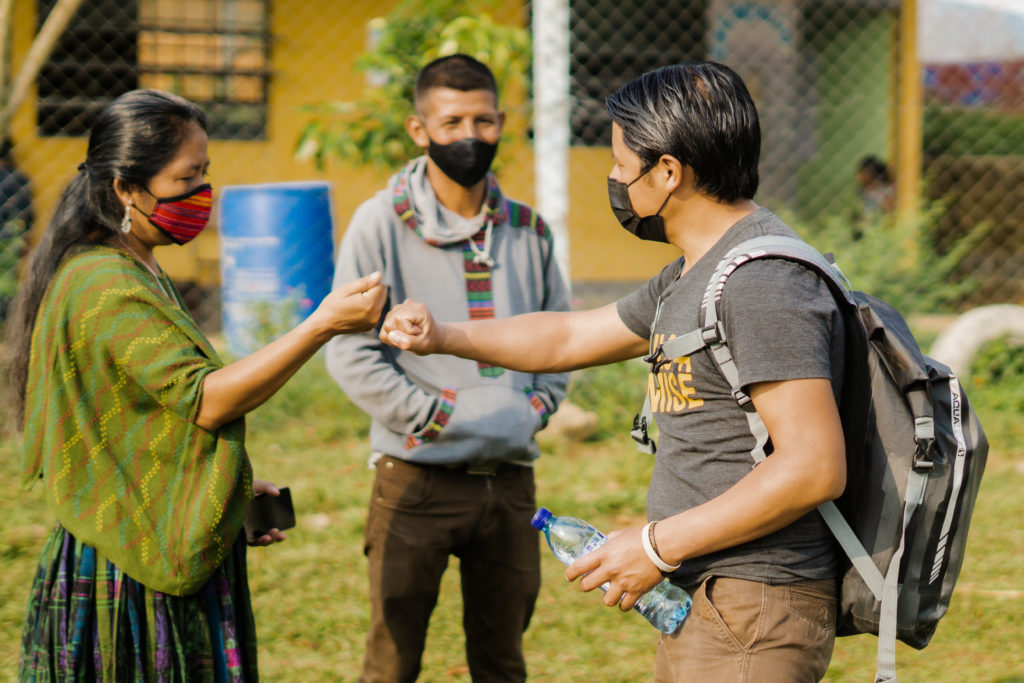Guatemala: With a great number of amazing volcanoes, mountains and lakes in its 22 departments (i.e., states), it definitely makes the country The Land of Eternal Spring! But there are a few other characteristics that make Guatemala even more interesting and special. It is a country populated by groups of people with different backgrounds, cultures, traditions and languages. This includes 25 languages of which 22 are Mayan languages, the Garifuna language, the Xinca language, and the Spanish language.

Pencils of Promise (PoP) works in coordination with the Ministry of Education at the central, regional and community levels. The Ministry of Education has developed four sets of curricula as the technical instruments that prescribe the general guidelines and common elements from the Mayan, Xinca, Garífuna and Ladino cultures. In these four instruments, they propose content and methodological guidelines to carry out the learning and teaching process in the classroom.
PoP’s Teacher Support program focuses on training teachers to promote and teach literacy in rural schools throughout the country. Before starting the program in a school, a selection process is carried out in which the mother tongue of the students is determined. This is done in order to guarantee that program content and books are contextualized as much as possible to the cultural and linguistic needs of the students. While we understand that culture and language may vary within communities that are located really close to one another, this approach helps us guarantee that our intervention does not threaten their mother tongue and cultural identity in any way.
PoP offers the Teacher Support program in 29 schools on the southern coast of Guatemala where the mother tongue is Spanish. The program includes training for teachers on the program stages, elements and planning frameworks for preparing literacy sessions. In PoP’s workshops, teachers are able to discover that the acquisition of literacy has three main stages: emergent, initial stage and established stages. The emergent stage of literacy is evidenced through pre-elementary school. At this stage, kids develop seven elements of literacy through socializing and interacting with contextualized books. The socialization and interaction that is promoted by teachers in the classrooms happens in the language that students are more familiar with (i.e., mother tongue), which helps them to not only develop social and interaction skills but also to prepare them for the next stage.

The initial stage of literacy happens throughout first, second and third grades. It is through this stage where students develop other elements of literacy that provide them with the skills to decodify (read) and codify (write), in addition to developing reading fluency. Teachers can also make this process happen in the language students are more familiar with. By the time they enter fourth grade, kids go through the last stage, (the established stage of literacy), where its main focus is on developing appropriate reading comprehension skills, ultimately making use of the language that facilitates learning for them.
For PoP, it is very important that teachers gain knowledge of this information. These three stages and their elements are a key for learning to decodify, read with fluency and develop comprehension in any language. Teachers also raise awareness on how the understanding of this content helps them to teach their students to read and write, giving them the opportunity to use their mother tongue.
After teachers are trained, PoP carries out more support by having personalized pedagogical coaching sessions with the teachers in order to provide teachers with more teaching and learning strategies. Teachers are also encouraged to reflect not only on the content of the workshops, but also on the cultural and linguistic characteristics of the students so that the learning of literacy in their mother tongue is strengthened, as stipulated by the national curricula.

PoP’s short-term plan is to expand its programs to schools belonging to the Mayan culture, where the students’ mother tongue is divided into 22 Mayan languages spoken in the country. PoP is currently carrying out a process of research and analysis of the cultural and linguistic characteristics of the students in a region with schools where the Mayan language is spoken. This is being done with the intention of adapting and contextualizing the program model to the needs of teachers and students as necessary both in the content of the program as well as in the books to be delivered to these schools.
PoP’s programming in a school in any region of the country and across any of the four cultural groups will focus on providing teachers with the skills to teach literacy, regardless of the language that predominates in their classroom and community. This will allow them to apply the strategies using the language they as teachers and their students, feel more identified with and respect the culture to which they belong.